Space News
Knowridge
346
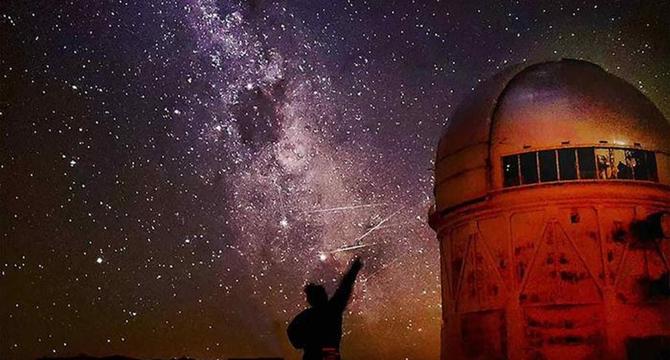
Image Credit: Knowridge
These special galaxies lit up the cosmic noon
- Star formation peaked during the Cosmic Noon, which spanned from 10 to 12 billion years ago, with rates 10 to 100 times greater than today.
- Research focusing on Lyman Alpha Emitters (LAEs) during this time revealed their key role as progenitors of galaxies like the Milky Way.
- LAEs, young galaxies, exhibit intense star formation and are vital in understanding galaxy evolution.
- New study titled 'ODIN: Star Formation Histories Reveal Formative Starbursts Experienced by Lyα-emitting Galaxies at Cosmic Noon' by Nicole Firestone details insights into LAEs.
- Machine learning techniques were used to analyze 74 LAEs' star formation histories, indicating primarily first major star formation bursts.
- 95% of LAEs are experiencing dominant star formation bursts, showcasing their status as young galaxies undergoing initial bursts of star formation.
- The study's findings provide insights into the origin of galaxies like the Milky Way, shedding light on the mysteries of creation and galaxy evolution.
- Astronomers are intrigued by the Milky Way's history and the discovery of LAEs as potential precursors further fuels interest in galaxy formation and evolution.
- The JWST's discoveries of early massive spiral galaxies challenge existing theories and enhance understanding of galaxy evolution.
- The research indicates that LAEs are indeed the early building blocks of galaxies like the Milky Way, marking a significant milestone in unraveling our galaxy's origin story.
Read Full Article
20 Likes
TechCrunch
210

Image Credit: TechCrunch
The Robinhood founder who might just revolutionize energy, if he succeeds
- Baiju Bhatt, former CCO of Robinhood, is now launching Aetherflux, a space company focusing on beaming solar power from space for renewable energy and national defense.
- Aetherflux, with $60 million funding, aims to revolutionize space solar power with smaller, nimble satellites using fiber lasers.
- Bhatt's space ambitions stem from his father's NASA career, and his new venture targets creating a significant impact in the space sector.
- Starting with national defense, Aetherflux's precision technology can beam power to forward bases without relying on fuel logistics, potentially changing military operations.
- Inspired by Elon Musk, Bhatt believes his outsider perspective is advantageous in exploring new frontiers like space technology.
- Aetherflux's approach involves hardware-rich testing to ensure satellite success, with broader implications such as providing renewable energy worldwide.
- The company has a diverse team and aggressive timeline, with plans to launch a demonstration satellite in a year, partnering with DARPA for technology development.
- With significant funding and support, Bhatt's Aetherflux seeks to revolutionize space-based solar power, envisioning applications beyond military use.
- Bhatt's vision for Aetherflux aligns with creating long-term impacts by leveraging innovative technology for renewable energy solutions.
- Aetherflux's approach to space technology presents a departure from traditional concepts, aiming to redefine energy distribution and emergency power provision.
- Bhatt's blend of inspiration, strategic partnerships, and innovative thinking sets the stage for potential game-changing advancements in the space and energy sectors.
Read Full Article
12 Likes
Hackaday
333
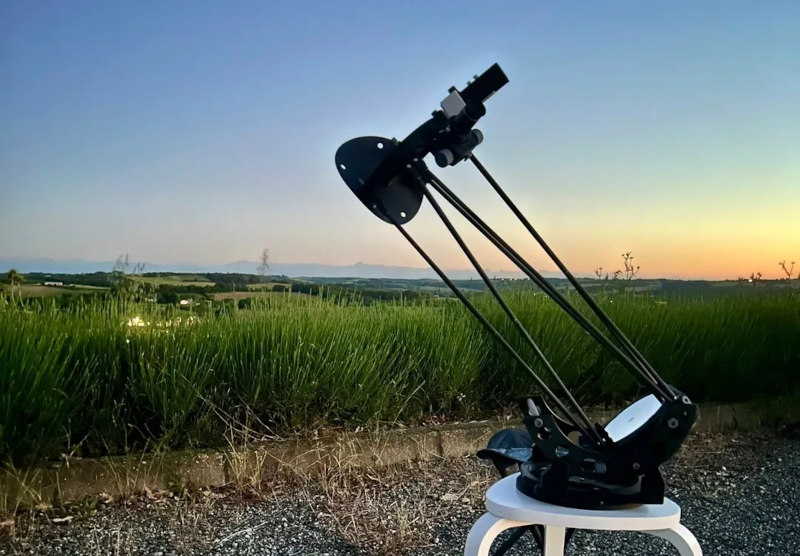
Image Credit: Hackaday
Build Your Own Telescope the Modern Way
- Ausable to build a 3D-printable telescope kit is tempting enthusiasts into telescope making.
- Using PLA for printing is not recommended, and additional parts are required.
- Instructions and parts list may be available on a README or support page.
- Optics can be obtained from other telescopes or purchased separately.
- The telescope can be made ultra-portable for travel purposes.
- The design of this telescope differs from traditional builds.
- Enthusiasts can choose to buy a complete kit if not interested in DIY.
- Building a telescope from scratch involves grinding mirrors and other intricate processes.
- Community support is available through a Discord server and a support page in French.
- The telescope kit offers a modern take on telescope construction.
- Building this telescope kit could be a unique experience for hobbyists.
- Enthusiasts are encouraged to share their experiences if they decide to build the telescope.
- For those preferring traditional methods, a guide for building telescopes without 3D printing exists.
- Having access to a summer program at a University in the past has inspired many to explore telescope making.
- The allure of telescope making through 3D-printable kits offers a new approach to the hobby.
Read Full Article
20 Likes
Nasa
303
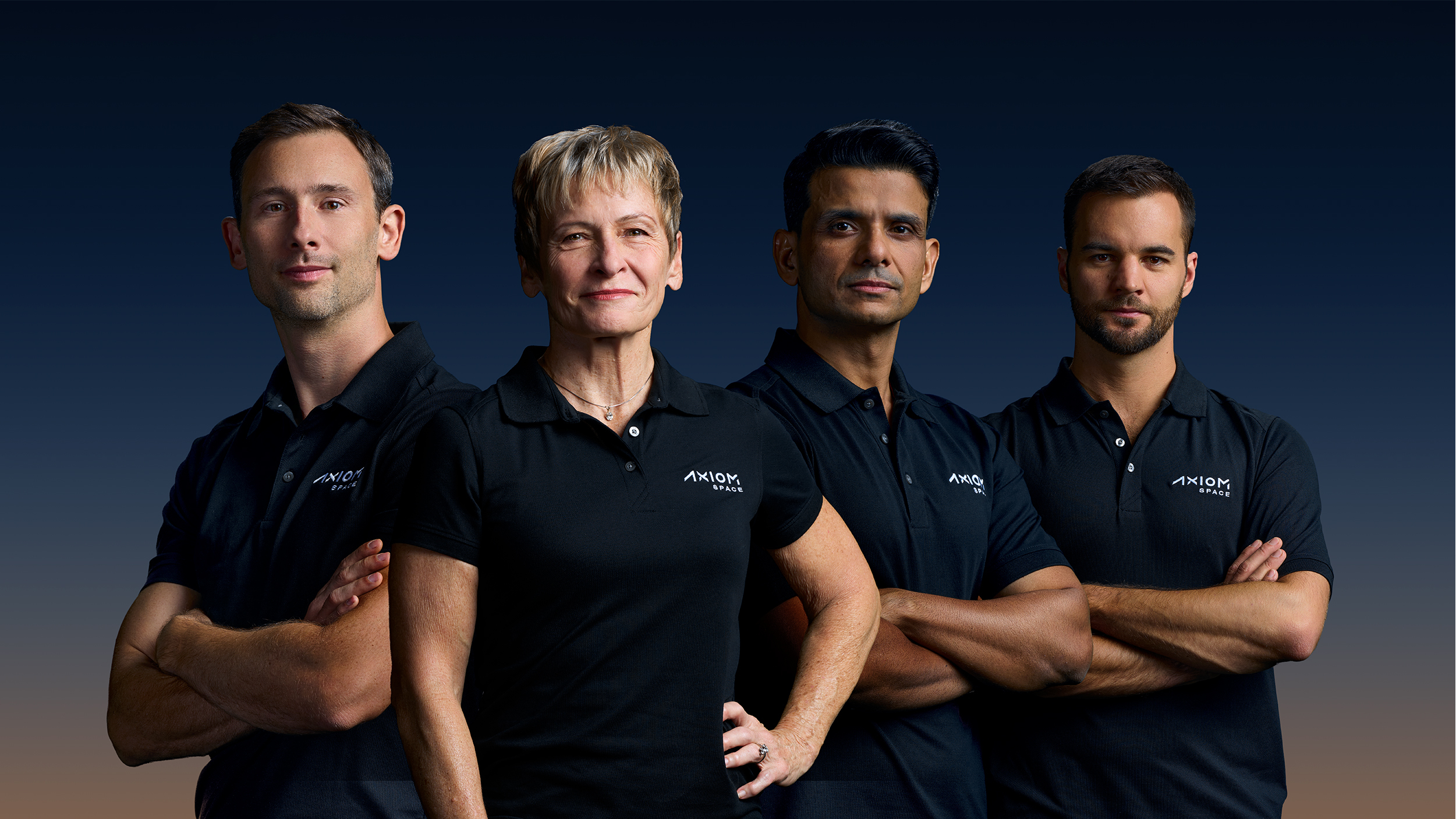
Image Credit: Nasa
NASA Provides Latest Axiom Mission 4 Launch, Station Operations Update
- NASA, Axiom Space, and SpaceX are reviewing launch opportunities for Axiom Mission 4 to the International Space Station.
- The launch scheduled for Sunday, June 22, has been postponed, with a new date to be determined.
- Additional time is needed for evaluating ISS operations after recent repair work in the Zvezda service module.
- NASA aims to ensure the station is ready for additional crew members.
- The crew for Axiom Mission 4, including astronauts from India, Poland, and Hungary, remains in quarantine.
- Peggy Whitson will command the mission, with Shubhanshu Shukla as pilot and two mission specialists from ESA and Hungary.
- SpaceX's Falcon 9 rocket and Dragon spacecraft are ready at Kennedy Space Center.
- Stay updated on station activities through various social media channels.
- The crew stands ready to launch when the station is prepared to receive them.
Read Full Article
18 Likes
Discover more
Livescience
74

Image Credit: Livescience
A 'new star' has exploded into the night sky — and you can see it from North America
- A 'new star' has exploded in the constellation Lupus within the Milky Way and is visible in parts of North America.
- Spotted on June 12, the star brightened from an initial magnitude of +8.7 to +5.7 by June 18.
- Named V462 Lupi, astronomers believe it is a classical nova, a stellar explosion shining temporary bright in the sky.
- The star, located in Lupus constellation, could continue to brighten making it more visible.
- Visible from the Southern Hemisphere, it can also be seen from North America near the southern horizon after sunset.
- Amateur astronomers in the U.S. have reported sightings in states like Arizona, California, and even as far north as Lake Superior.
- Naked-eye classical novas like V462 Lupi are rare occurrences, typically observable once a year.
- Some novas recur periodically like the Blaze Star, expected to reappear every 80 years, showing the unpredictability of these events.
- No certainty exists on V462 Lupi's future behavior as it is the first recorded appearance.
- Discovering such novas offers insights into stellar evolution and adds a celestial spectacle for astronomers and stargazers.
Read Full Article
4 Likes
Silicon
162
Image Credit: Silicon
SpaceX Starship Explodes On Launch Pad
- SpaceX experienced a setback with its Starship program as a Starship rocket exploded during routine testing at the Starbase facility in Texas.
- In a previous test, a Starship prototype successfully launched but failed to deploy satellites as planned and subsequently crashed into the Indian Ocean.
- The recent explosion was described as a 'catastrophic failure' during a fuelling process for a test flight; no injuries were reported.
- Elon Musk mentioned the incident with a tweet saying 'Just a scratch' and later tweeted 'RIP Ship 36.'
- SpaceX's Starship is crucial for NASA's crewed missions to the Moon and Elon Musk's ambitions to colonize Mars.
- SpaceX plans to continue with another Starship launch before the end of the month, aiming for a faster launch pace in the future.
Read Full Article
9 Likes
Livescience
290

Image Credit: Livescience
SpaceX's Starship explodes on Texas launch pad in 'catastrophic failure' during routine test
- SpaceX's Starship, the largest rocket ever built, suffered a catastrophic failure and exploded during routine testing at the South Texas Starbase site.
- This is not the first setback for the rocket's upper stages, with prior explosions during test flights in January and March, as well as problems during reentry in May.
- The exact cause of the latest explosion is unclear, and SpaceX is currently investigating the incident.
- The Starship is crucial for Elon Musk's plans to transport spacecraft, crew members, satellites, and cargo into orbit around Earth, the moon, and Mars.
- Standing 403 feet tall and powered by 16.5 million pounds of thrust, the Starship can carry 10 times the payload of SpaceX's Falcon 9 rockets.
- It is designed for cost-efficient manufacturing, utilizing stainless steel construction and methane as fuel, which can allegedly be collected on Mars.
- Despite early failures, SpaceX remains committed to developing the rocket, with plans to send robots to Mars by 2026 and operate a private space station post-2030.
- SpaceX has secured $4 billion in NASA contracts for the Human Landing System, aimed at landing astronauts on the moon in 2027 as part of the Artemis III mission.
- The impact of the recent explosion on the upcoming Starship flight schedule is currently uncertain, with ongoing investigations by SpaceX and the FAA into the failed Flight 9 reentry.
Read Full Article
17 Likes
Medium
74

Image Credit: Medium
The Anthropic Mirror
- Our existence may not be a stroke of luck but rather the foundation of our reality.
- The intricate details and vibrant life in our world exist because we perceive and experience them.
- Different beings could lead to entirely different worlds, showcasing infinite possibilities in the cosmos.
- We are just one manifestation among numerous potential versions of ourselves, constantly evolving.
- Despite feeling connected to the cosmos, we also sense a profound disconnection when observing the universe.
- Every action we take has the potential to shape or end life, reflecting a peculiar balance of existence.
- Various ways of understanding the world converge to reveal shared insights about reality.
- Our pursuit of knowledge often leads to a relinquishing of that knowledge, raising questions about self-understanding.
- While we comprehend the world, mysteries about our own existence remain unsolved.
- The journey of unraveling our nature is a profound beauty, guiding us towards self-discovery.
- We strive to understand and refine the essence of who we are, akin to a self-diagnosing machine seeking 'viruses.'
Read Full Article
4 Likes
Brighter Side of News
334

Image Credit: Brighter Side of News
Why are giant planets found at the outer reaches of solar systems
- Enormous and mysterious worlds are found in the outer reaches of planetary systems, far beyond known planets' orbits.
- New research from Rice University suggests that these distant planets result from early-life chaos in planetary systems.
- Planets in crowded birth clusters can be pushed to extremely wide orbits due to gravitational interactions and neighboring stars' nudges.
- The stability of wide-orbit planets makes them resistant to interference and explains their curious distant positions.
- The study offers insights into the potential existence of Planet Nine, an unseen massive world affecting icy bodies beyond Neptune.
- Some scattered planets become rogue planets, drifting alone in interstellar space, while others are trapped in stable wide orbits.
- The research indicates that trapping efficiency varies among different types of planetary systems.
- Wide-orbit planets may offer new targets for future telescopes, particularly around metal-rich stars with gas giants.
- As exoplanet hunting advances, the study contributes to understanding the evolution of planetary systems across the galaxy.
- The findings provide a comprehensive model of how wide-orbit planets emerge in planetary systems, shedding light on the solar system's architecture.
Read Full Article
20 Likes
Hackaday
162

Image Credit: Hackaday
Space-Based Datacenters Take The Cloud into Orbit
- The increasing demand for datacenters due to AI technologies is causing problems for power grids and cooling systems on Earth.
- Placing datacenters in orbit is being considered as a solution to environmental concerns and sustainability issues.
- Space-based datacenters offer advantages in terms of power generation, cooling solutions, and connectivity.
- Utilizing solar power in orbit, such as through Sun Synchronous Orbits, provides a continuous and reliable energy source for datacenters.
- Cooling systems in space-based datacenters rely on proven technologies like radiators and liquid cooling for heat dissipation.
- Connectivity for orbiting datacenters can be achieved through networks like Starlink, ensuring high-bandwidth operations.
- Companies like Starcloud and Axiom Space are exploring the implementation of datacenters in space, leveraging partnerships and advanced technologies.
- European and American efforts are focused on deploying datacenters in orbit, with projects like ASCEND and initiatives by private companies.
- The competition in space-based computing includes startups like Ada Space, working on orbital supercomputers with high-speed data processing capabilities.
- The potential for orbital datacenters to revolutionize high-performance computing and AI capabilities is actively being pursued by various entities worldwide.
- The vision of space-based datacenters represents a significant leap in technological advancement and sustainability for the future.
Read Full Article
9 Likes
TechCrunch
224
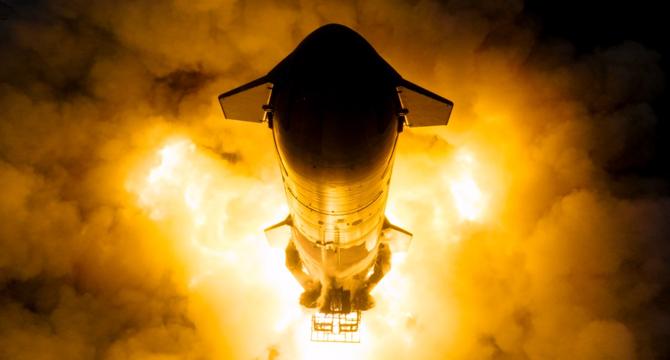
Image Credit: TechCrunch
SpaceX’s Starship blows up ahead of 10th test flight
- One of SpaceX's Starship launch vehicles exploded on a test stand in Texas ahead of the tenth test flight.
- SpaceX confirmed that all personnel are safe and there are no hazards to surrounding communities.
- The company did not provide an explanation for the explosion during the preparations.
- The impact on SpaceX's development of the Starship rocket system remains unclear.
- Elon Musk referred to the explosion as 'Just a scratch.'
- SpaceX has been aggressively developing the Starship and the Super Heavy booster for years.
- The FAA recently increased the limit on Starship launches in Texas from 5 to 25.
- Starship faced several issues this year, with explosions during tests in January, March, and May.
- During its most recent flight in May, the rocket failed to deploy dummy Starlink satellites.
- SpaceX aims to send a Starship to Mars in 2026, with ongoing development of a larger 'Version 3' of the rocket.
Read Full Article
13 Likes
Livescience
303
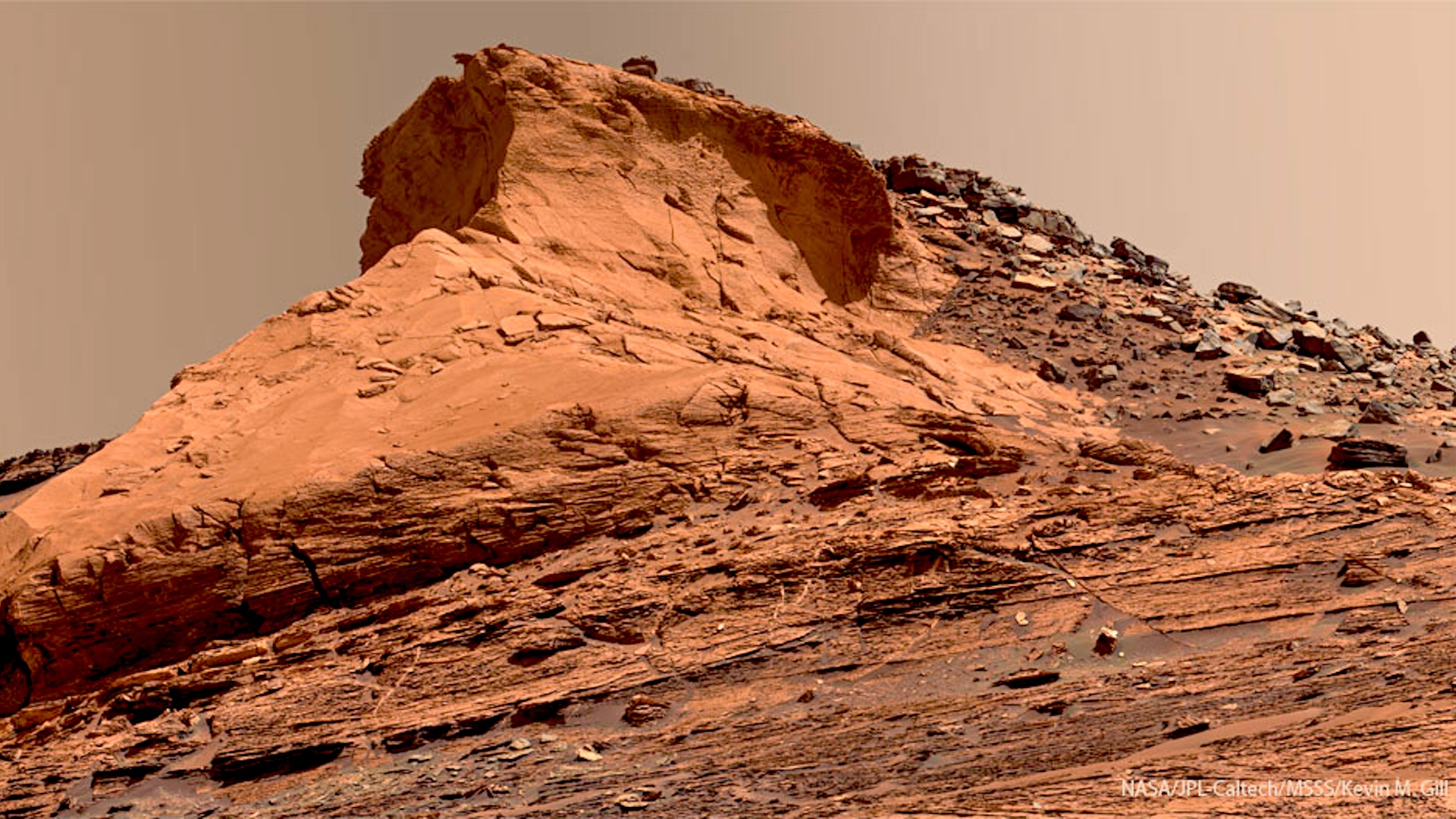
Image Credit: Livescience
Is Mars really red? A physicist explains the truth.
- Mars appears reddish due to iron oxide in its rocks and dust, not purely red but more of a rusty brown or tan color as seen from rovers' pictures on its surface.
- The red color of Mars comes from iron oxide, similar to the way hemoglobin gives blood its red color.
- Not all parts of Mars have the same color, with white ice caps at its poles containing frozen water and carbon dioxide.
- Mars emits light in colors beyond visible light, including ultraviolet and infrared, which scientists can measure to study the planet.
- Pictures taken with special cameras on telescopes reveal different features of Mars, aiding scientists in understanding its landscape and history.
- Additional information can be obtained from various types of telescope pictures outside the regular visible spectrum, such as using radio waves, microwaves, X-rays, and gamma rays.
- Researchers use false colors in infrared pictures to enhance visibility of features, providing insights into Mars' atmosphere and surface.
- Scientists aim to answer key questions about Mars' formation, active volcanic history, atmospheric origins, and the presence of liquid water through detailed observations.
- Despite centuries of observation, astronomers continue to explore Mars with new technology and techniques to uncover more about this intriguing planet.
- The article provides insights into the true color of Mars, its composition, and the importance of diverse observation methods in planetary research.
Read Full Article
18 Likes
Arstechnica
237
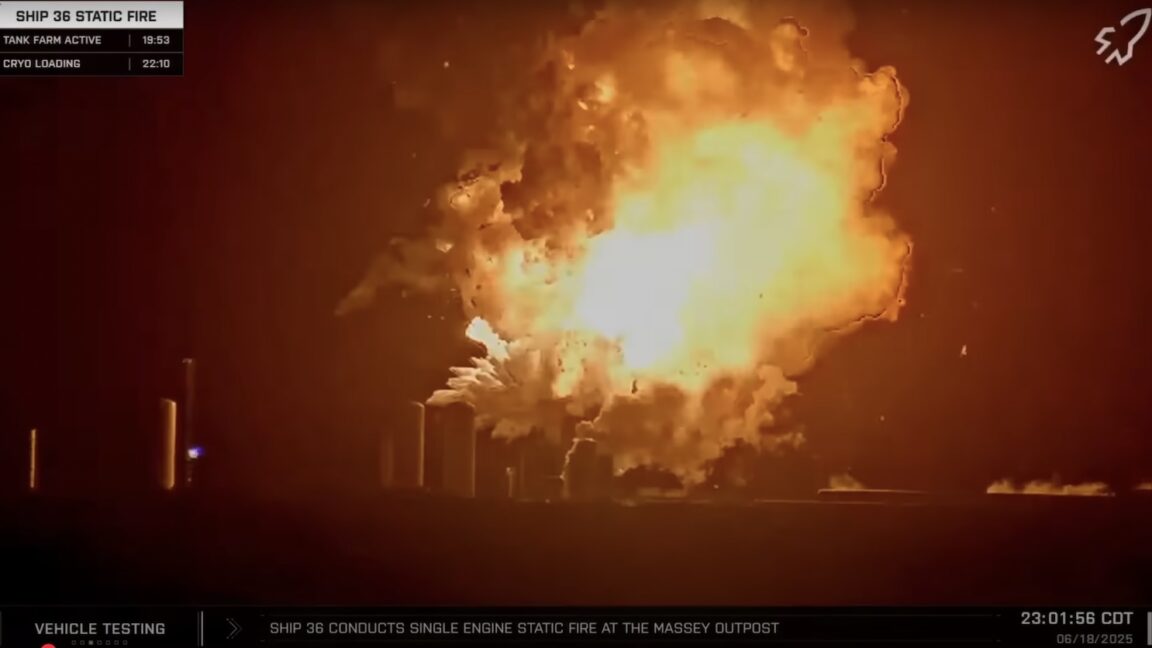
Image Credit: Arstechnica
SpaceX’s next Starship just blew up on its test stand in South Texas
- SpaceX's next Starship rocket exploded during a ground test in South Texas, causing significant damage and setting off fires around the test site.
- The explosion occurred as SpaceX was loading propellants into the rocket for a static fire test, leading to an evacuation of personnel from the area.
- The incident was captured on video by various media organizations and was visible from miles away, with no reported injuries.
- This setback adds to a series of failures in SpaceX's Starship program this year, delaying the next test flight and raising questions about the program's future.
- SpaceX had planned a tentative launch for June 29, which is now postponed, impacting the company's progress towards orbital flights and in-space refueling demonstrations.
- The explosion highlights the challenges SpaceX faces in advancing its Starship program, aiming for reusability and heavier payload lifting capability with future designs.
- The latest Starship design, Version 2 or Block 2, introduced improvements like enhanced heat shielding and propulsion systems but has faced persistent testing failures.
- SpaceX is now developing a third-generation Starship, Version 3, with upgrades to address current issues and support future missions, including crewed lunar landings in partnership with NASA.
- Elon Musk envisions Mars missions with Starship in the coming years, but achieving routine launch operations and deep space exploration capabilities remains a complex challenge for SpaceX.
- Despite setbacks, SpaceX's ambitions for interplanetary travel and cargo missions signal a bold vision for the future of space exploration, albeit with significant technical hurdles to overcome.
Read Full Article
14 Likes
Earthsky
202

Image Credit: Earthsky
2 of Uranus’ largest moons have surprising dark sides
- A new study using the Hubble Space Telescope revealed that Uranus' moons Titania and Oberon are darker on their leading hemispheres due to dust from irregular moons.
- Contrary to expectations, the darkening on the leading hemispheres of Titania and Oberon is caused by dust accumulation arising from tiny micrometeorites impacting the moons.
- The study, presented by researcher Christian Soto at STScI, was shared at the 246th Meeting of the American Astronomical Society.
- Researchers had anticipated darker trailing hemispheres on the moons due to radiation from charged particles in Uranus' magnetosphere.
- The tidally locked nature of Uranus' moons, with the same hemisphere always facing the planet, contributes to this phenomenon.
- Investigator Richard Cartwright from Johns Hopkins Applied Physics Laboratory cited Uranus' extreme axial tilt as a factor influencing the magnetic field interaction with the moons.
- Dust accumulation hitting the leading hemispheres of Titania and Oberon is shielding the inner moons from darkening.
- The unexpected findings challenge previous assumptions about the interaction between Uranus' magnetic field and its moons.
- The research suggests a unique dust collection explanation for the dark sides of Titania and Oberon, contrary to the anticipated effects from Uranus' magnetosphere.
- This study sheds light on the complex interplay of factors influencing the surfaces of Uranus' largest moons.
Read Full Article
12 Likes
Earthsky
347

Image Credit: Earthsky
Sculptor galaxy pops in most detailed 1,000-color image
- The Sculptor galaxy, a spiral galaxy near our Milky Way, was captured in a detailed 1,000-color image by ESO's Very Large Telescope.
- The image was taken using the Multi Unit Spectroscopic Explorer (MUSE) instrument, capturing rich colors and details of the galaxy.
- Astronomers gathered over 100 exposures over 50 hours to create this detailed image, providing insights into the galaxy located 11 million light-years away.
- Different colors in the image represent various wavelengths of light, aiding in understanding the galaxy's stars, gas, and dust composition, age, and movements.
- Enrico Congiu led a study on the Sculptor galaxy, emphasizing its complexity and the ability to study its internal structure due to its proximity and size.
- The MUSE instrument allowed zooming in on individual star-forming regions and out to study the galaxy as a whole, covering about 65,000 light-years.
- Astronomers identified around 500 planetary nebulae in the galaxy, offering new insights into stellar evolution and galaxy distance calculations.
- The discovery of planetary nebulae helps verify the galaxy's distance, crucial for further studies on the galaxy's stars and gas dynamics.
- The detailed image will aid in exploring how small-scale processes impact the overall galaxy, revealing new mysteries in galactic evolution.
Read Full Article
20 Likes
For uninterrupted reading, download the app